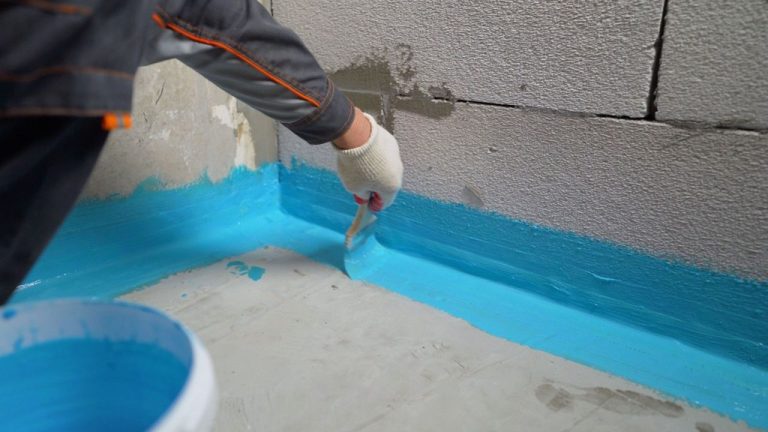Waterproofing toilet floor systems is not a matter of luxury or aesthetics. It is a matter of dignity, of health, of quiet resilience in the face of water’s relentless will to move.
In Singapore, in flats stacked like puzzle pieces and public housing that holds generations, the smallest breach in a toilet floor can ripple across a home, dripping into light fixtures, staining ceilings, fraying the edges of peace. Yet we rarely talk about the places where water waits. We do not speak often of mould that curls at the edges of baseboards, or of the neighbours who live beneath the leak.
The Stories Walls Can’t Tell, but Floors Remember
In a flat built in the 1980s, the stain first appeared on the ceiling of the unit below—a discoloured patch that looked like bruised fruit. There had been no flooding, no obvious spill. But upstairs, the floor beneath the toilet tiles had cracked. The waterproof membrane—if it had ever been applied properly—had failed.
It’s a common story in Singapore’s ageing housing stock: old waterproofing layers, compromised over time, letting moisture slip unseen between cement and tile, until it reappears somewhere else. Not with noise. With silence.
“People think of leaks as accidents. But most are slow,” said a property technician working in the eastern region. “They begin invisibly. By the time they’re visible, it’s already too late.”
And then there are the families who endure these invisible intrusions. The smell of mildew. The peeling paint. The steady, slow erosion of a home that once felt safe and dry.
Who Pays for the Drip That Isn’t Yours?
Toilet floor failures do more than damage walls. They damage relationships.
In shared buildings—condominiums, HDBs, and commercial properties alike—leaks invite blame. Who owns the pipe? Who neglected the membrane? Whose insurance will cover the repairs? The truth is often murky. The law may help, but neighbours bear the emotional cost.
Waterproofing failures don’t just test the structure. They test civility.
This is why some of Singapore’s facilities maintenance professionals are shifting their approach. Instead of reacting to water damage, they’re pushing for preventative sealing, especially in older toilets, where toilet floor barrier membranes have long since worn thin.
The Membrane: A Thin Line Between Health and Hazard
In public discourse, we rarely mention that mould—born from moisture—is a health hazard. In homes with poor ventilation, damp toilets can lead to respiratory distress, asthma flare-ups, and illness in children and the elderly. It is not just cosmetic. It is microbial.
And the root of this hazard often lies just beneath our feet.
Modern toilet floor waterproofing systems are meant to prevent this. Applied between the concrete subfloor and the finished tile layer, a high-quality membrane acts like skin: it is flexible, continuous, and self-contained. But even the best membranes fail without care:
· Corners and floor trap penetrations are vulnerable.
· Poor surface preparation can lead to delamination.
· Rushed renovations skip drying time, compromising adhesion.
· Heavy foot traffic and shifting ground can cause micro-tears.
In many homes, especially rental units turned over quickly, these shortcuts are commonplace.
The Economics of Prevention
There is a quiet truth in building maintenance: it is always cheaper to protect than to repair.
Re-tiling a bathroom after a membrane failure can cost thousands of dollars, especially when water has damaged electricals, cabinetry, or neighbouring units. A properly executed waterproofing job, in contrast, can last 10 years or more with minimal upkeep.
Still, prevention rarely gets attention. It doesn’t photograph well. It doesn’t show up on Instagram. But for landlords, property managers, and homeowners alike, it is the most vital investment no one sees.
“If you do the waterproofing right,” one building supervisor said, “no one will ever know. That’s the point.”
Invisible Labour, Invisible Care
There is an unseen labour that supports every structure. In the way tile is aligned, in the sealant that lines the drainage collar, in the membrane rolled across a cold slab of concrete and left to cure undisturbed. This work, often undervalued, carries the emotional weight of protection.
Waterproofing is not merely technical. It is human. It reflects an understanding that the things which most threaten us are often invisible, and that the things that protect us often go unrecognised.
It’s the sort of care passed from one homeowner to the next, a legacy of thoughtful design. It’s not loud, but it is lasting.
Water and Memory
Buildings remember. They hold stories in their walls, and secrets in their floors. When water seeps where it should not, it marks more than drywall. It marks history. It marks care taken—or not taken.
To waterproof a toilet floor is to acknowledge that damage begins in quiet places. That homes—whether rented or owned, public or private—deserve protection for those who live beneath the surface.
In a city where water is ever-present and where every square metre of home matters, there is no detail too small. And perhaps, the most powerful act of care is not a grand gesture, but a thin, resilient barrier beneath our feet—placed with foresight, sealed with skill, and left to do its work in silence.
That is the purpose, and the quiet promise, of waterproofing toilet floor.

